Fusion reactors: Not what they’re cracked up to be
By Daniel Jassby | April 19, 2017
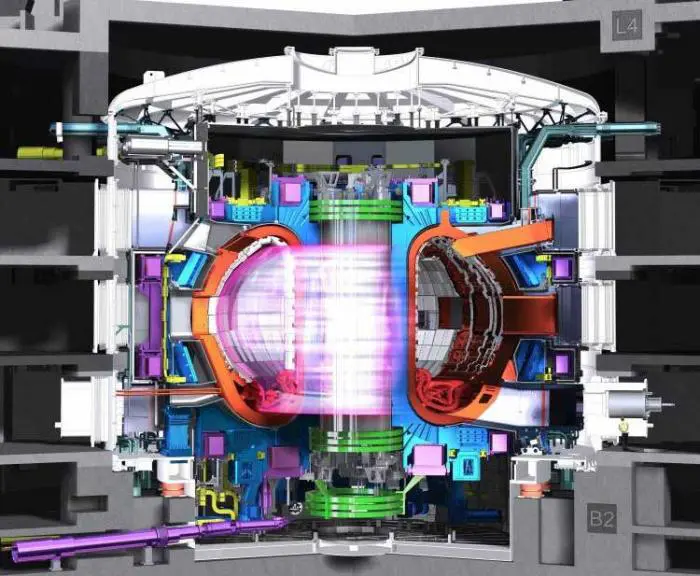 Artist's conception of "first plasma" in a tokamak. Image courtesy of ITER
Artist's conception of "first plasma" in a tokamak. Image courtesy of ITER
Fusion reactors have long been touted as the “perfect” energy source. Proponents claim that when useful commercial fusion reactors are developed, they would produce vast amounts of energy with little radioactive waste, forming little or no plutonium byproducts that could be used for nuclear weapons. These pro-fusion advocates also say that fusion reactors would be incapable of generating the dangerous runaway chain reactions that lead to a meltdown—all drawbacks to the current fission schemes in nuclear power plants.
And, like fission, a fusion-powered nuclear reactor would have the enormous benefit of producing energy without emitting any carbon to warm up our planet’s atmosphere.
But there is a hitch: While it is, relatively speaking, rather straightforward to split an atom to produce energy (which is what happens in fission), it is a “grand scientific challenge” to fuse two hydrogen nuclei together to create helium isotopes (as occurs in fusion). Our sun constantly does fusion reactions all the time, burning ordinary hydrogen at enormous densities and temperatures. But to replicate that process of fusion here on Earth—where we don’t have the intense pressure created by the gravity of the sun’s core—we would need a temperature of at least 100 million degrees Celsius, or about six times hotter than the sun. In experiments to date, the energy input required to produce the temperatures and pressures that enable significant fusion reactions in hydrogen isotopes has far exceeded the fusion energy generated.
But through the use of promising fusion technologies such as magnetic confinement and laser-based inertial confinement, humanity is moving much closer to getting around that problem and achieving that breakthrough moment when the amount of energy coming out of a fusion reactor will sustainably exceed the amount going in, producing net energy. Collaborative, multinational physics projects in this area include the International Thermonuclear Experimental Reactor (ITER) joint fusion experiment in France, which broke ground for its first support structures in 2010—with the first experiments on its fusion machine, or tokamak, expected to begin in 2025.
As we move closer to our goal, however, it is time to ask: Is fusion really a “perfect” energy source? After having worked on nuclear fusion experiments for 25 years at the Princeton Plasma Physics Lab, I began to look at the fusion enterprise more dispassionately in my retirement. I concluded that a fusion reactor would be far from perfect, and in some ways close to the opposite.
Scaling down the sun. As noted above, fusion reactions in the sun burn ordinary hydrogen at enormous density and temperature, sustained by an effectively infinite confinement time, and the reaction products are benign helium isotopes. Artificial (terrestrial) fusion schemes, on the other hand, are restricted to much lower particle densities and much more fleeting energy confinement, and are therefore compelled to use the heavier neutron-rich isotopes of hydrogen known as deuterium and tritium—which are 24 orders of magnitude more reactive than ordinary hydrogen. (Think of the numeral one with 24 zeroes after it.) This gargantuan advantage in fusion reactivity allows human-made fusion assemblies to be workable with a billion times lower particle density and a trillion times poorer energy confinement than the levels that the sun enjoys. Consequently, the proponents of fusion reactors claim that when they are developed, fusion reactors will constitute a “perfect” energy source that will share none of the significant drawbacks of the much-maligned fission reactors.
But unlike what happens in solar fusion—which uses ordinary hydrogen—Earth-bound fusion reactors that burn neutron-rich isotopes have byproducts that are anything but harmless: Energetic neutron streams comprise 80 percent of the fusion energy output of deuterium-tritium reactions and 35 percent of deuterium-deuterium reactions.
Now, an energy source consisting of 80 percent energetic neutron streams may be the perfect neutron source, but it’s truly bizarre that it would ever be hailed as the ideal electrical energy source. In fact, these neutron streams lead directly to four regrettable problems with nuclear energy: radiation damage to structures; radioactive waste; the need for biological shielding; and the potential for the production of weapons-grade plutonium 239—thus adding to the threat of nuclear weapons proliferation, not lessening it, as fusion proponents would have it.
In addition, if fusion reactors are indeed feasible—as assumed here—they would share some of the other serious problems that plague fission reactors, including tritium release, daunting coolant demands, and high operating costs. There will also be additional drawbacks that are unique to fusion devices: the use of a fuel (tritium) that is not found in nature and must be replenished by the reactor itself; and unavoidable on-site power drains that drastically reduce the electric power available for sale.
All of these problems are endemic to any type of magnetic confinement fusion or inertial confinement fusion reactor that is fueled with deuterium-tritium or deuterium alone. (As the name suggests, in magnetic confinement fusion, magnetic and electrical fields are used to control the hot fusion fuel—a material that takes an unwieldy and difficult-to-handle form, known as a plasma. In inertial confinement, laser beams or ion beams are used to squeeze and heat the plasma.) The most well-known example of magnetic confinement fusion is the doughnut-shaped tokamak under construction at the ITER site; inertial confinement fusion is exemplified by the laser-induced microexplosions taking place at the US-based National Ignition Facility.
Tritium fuel cannot be fully replenished. The deuterium-tritium reaction is favored by fusion developers because its reactivity is 20 times higher than a deuterium-deuterium fueled reaction, and the former reaction is strongest at one-third the temperature required for deuterium-only fusion. In fact, an approximately equal mixture of deuterium and tritium may be the only feasible fusion fuel for the foreseeable future. While deuterium is readily available in ordinary water, tritium scarcely exists in nature, because this isotope is radioactive with a half-life of only 12.3 years. The main source of tritium is fission nuclear reactors.
If adopted, deuterium-tritium based fusion would be the only source of electrical power that does not exploit a naturally occurring fuel or convert a natural energy supply such as solar radiation, wind, falling water, or geothermal. Uniquely, the tritium component of fusion fuel must be generated in the fusion reactor itself.
The tritium consumed in fusion can theoretically be fully regenerated in order to sustain the nuclear reactions. To accomplish this goal, a lithium-containing “blanket” must be placed around the reacting medium—an extremely hot, fully ionized gas called a plasma. The neutrons produced by the fusion reaction will irradiate the lithium, “breeding” tritium.
But there is a major difficulty: The lithium blanket can only partly surround the reactor, because of the gaps required for vacuum pumping, beam and fuel injection in magnetic confinement fusion reactors, and for driver beams and removal of target debris in inertial confinement reactors. Nevertheless, the most comprehensive analyses indicate that there can be up to a 15 percent surplus in regenerating tritium. But in practice, any surplus will be needed to accommodate the incomplete extraction and processing of the tritium bred in the blanket.
Replacing the burned-up tritium in a fusion reactor, however, addresses only a minor part of the all-important issue of replenishing the tritium fuel supply. Less than 10 percent of the injected fuel will actually be burned in a magnetic confinement fusion device before it escapes the reacting region. The vast majority of injected tritium must therefore be scavenged from the surfaces and interiors of the reactor’s myriad sub-systems and re-injected 10-to-20 times before it is completely burned. If only one percent of the unburned tritium is not recovered and re-injected, even the largest surplus in the lithium-blanket regeneration process cannot make up for the lost tritium. By way of comparison, in the two magnetic confinement fusion facilities where tritium has been used (Princeton’s Tokamak Fusion Test Reactor, and the Joint European Torus), approximately 10 percent of the injected tritium was never recovered.
To make up for the inevitable shortfalls in recovering unburned tritium for use as fuel in a fusion reactor, fission reactors must continue to be used to produce sufficient supplies of tritium—a situation which implies a perpetual dependence on fission reactors, with all their safety and nuclear proliferation problems. Because external tritium production is enormously expensive, it is likely instead that only fusion reactors fueled solely with deuterium can ever be practical from the viewpoint of fuel supply. This circumstance aggravates the problem of nuclear proliferation discussed later.
Huge parasitic power consumption. In addition to the problems of fueling, fusion reactors face another problem: they consume a good chunk of the very power that they produce, or what those in the electrical generating industry call “parasitic power drain,” on a scale unknown to any other source of electrical power. Fusion reactors must accommodate two classes of parasitic power drain: First, a host of essential auxiliary systems external to the reactor must be maintained continuously even when the fusion plasma is dormant (that is, during planned or unplanned outages). Some 75-to-100 MWe (megawatts electric) are consumed continuously by liquid-helium refrigerators; water pumping; vacuum pumping; heating, ventilating and air conditioning for numerous buildings; tritium processing; and so forth, as exemplified by the facilities for the ITER fusion project in France. When the fusion output is interrupted for any reason, this power must be purchased from the regional grid at retail prices.
The second category of parasitic drain is the power needed to control the fusion plasma in magnetic confinement fusion systems (and to ignite fuel capsules in pulsed inertial confinement fusion systems). Magnetic confinement fusion plasmas require injection of significant power in atomic beams or electromagnetic energy to stabilize the fusion burn, while additional power is consumed by magnetic coils helping to control location and stability of the reacting plasma. The total electric power drain for this purpose amounts to at least six percent of the fusion power generated, and the electric power required to pump the blanket coolant is typically two percent of fusion power. The gross electric power output can be 40 percent of the fusion power, so the circulating power amounts to about 20 percent of the electric power output.
In inertial confinement fusion and hybrid inertial/magnetic confinement fusion reactors, after each fusion pulse, electric current must charge energy storage systems such as capacitor banks that power the laser or ion beams or imploding liners. The demands on circulating power are at least comparable with those for magnetic confinement fusion.
The power drains described above are derived from the reactor’s electrical power output, and determine lower bounds to reactor size. If the fusion power is 300 megawatts, the entire electric output of 120 MWe barely supplies on-site needs. As the fusion power is raised, the on-site consumption becomes an increasingly smaller proportion of the electric output, dropping to one-half when the fusion power is 830 megawatts. To have any chance of economic operation that must repay capital and operational costs, the fusion power must be raised to thousands of megawatts so that the total parasitic power drain is relatively small.
In a nutshell, below a certain size (about 1,000 MWe) parasitic power drain makes it uneconomic to run a fusion power plant.
The problems of parasitic power drain and fuel replenishment by themselves are significant. But fusion reactors have other serious problems that also afflict today’s fission reactors, including neutron radiation damage and radioactive waste, potential tritium release, the burden on coolant resources, outsize operating costs, and increased risks of nuclear weapons proliferation.
Radiation damage and radioactive waste. To produce usable heat, the neutron streams carrying 80 percent of the energy from deuterium-tritium fusion must be decelerated and cooled by the reactor structure, its surrounding lithium-containing blanket, and the coolant. The neutron radiation damage in the solid vessel wall is expected to be worse than in fission reactors because of the higher neutron energies. Fusion neutrons knock atoms out of their usual lattice positions, causing swelling and fracturing of the structure. Also, neutron-induced reactions generate large amounts of interstitial helium and hydrogen, forming gas pockets that lead to additional swelling, embrittlement, and fatigue. These phenomena put the integrity of the reaction vessel in peril.
In reactors with deuterium-only fueling (which is much more difficult to ignite than a deuterium-tritium mix), the neutron reaction product has five times lower energy and the neutron streams are substantially less damaging to structures. But the deleterious effects will still be ruinous on a longer time scale.
The problem of neutron-degraded structures may be alleviated in fusion reactor concepts where the fusion fuel capsule is enclosed in a one-meter thick liquid lithium sphere or cylinder. But the fuel assemblies themselves will be transformed into tons of radioactive waste to be removed annually from each reactor. Molten lithium also presents a fire and explosion hazard, introducing a drawback common to liquid-metal cooled fission reactors.
Bombardment by fusion neutrons knocks atoms out of their structural positions while making them radioactive and weakening the structure, which must be replaced periodically. This results in huge masses of highly radioactive material that must eventually be transported offsite for burial. Many non-structural components inside the reaction vessel and in the blanket will also become highly radioactive by neutron activation. While the radioactivity level per kilogram of waste would be much smaller than for fission-reactor wastes, the volume and mass of wastes would be many times larger. What’s more, some of the radiation damage and production of radioactive waste is incurred to no end, because a proportion of the fusion power is generated solely to offset the irreducible on-site power drains.
Materials scientists are attempting to develop low-activation structural alloys that would allow discarded reactor materials to qualify as low-level radioactive waste that could be disposed of by shallow land burial. Even if such alloys do become available on a commercial scale, very few municipalities or counties are likely to accept landfills for low-level radioactive waste. There are only one or two repositories for such waste in every nation, which means that radioactive waste from fusion reactors would have to be transported across the country at great expense and safeguarded from diversion.
To reduce the radiation exposure of plant workers, biological shielding is needed even when the reactor is not operating. In the intensely radioactive environment, remote handling equipment and robots would be required for all maintenance work on reactor components as well as for their replacement because of radiation damage, particle erosion, or melting. These constraints will cause prolonged downtimes even for minor repairs.
Nuclear weapons proliferation. The open or clandestine production of plutonium 239 is possible in a fusion reactor simply by placing natural or depleted uranium oxide at any location where neutrons of any energy are flying about. The ocean of slowing-down neutrons that results from scattering of the streaming fusion neutrons on the reaction vessel permeates every nook and cranny of the reactor interior, including appendages to the reaction vessel. Slower neutrons will be readily soaked up by uranium 238, whose cross section for neutron absorption increases with decreasing neutron energy.
In view of the dubious prospects for tritium replenishment, fusion reactors may have to be powered by the two deuterium-deuterium reactions that have substantially the same probability, one of which produces neutrons and helium 3, while the other produces protons and tritium. Because tritium breeding is not required, all the fusion neutrons are available for any use—including the production of plutonium 239 from uranium 238.
It is extremely challenging to approach energy breakeven with deuterium-deuterium reactions because their total reactivity is 20 times smaller than that of deuterium-tritium, even at much higher temperatures. But a deuterium-fueled “test reactor” with 50 megawatts of heating power and producing only 5 megawatts of deuterium-deuterium fusion power could yield about 3 kilograms of plutonium 239 in one year by absorbing just 10 percent of the neutron output in uranium 238. Most of the tritium from the second deuterium-deuterium reaction could be recovered and burned and the deuterium-tritium neutrons will produce still more plutonium 239, for a total of perhaps 5 kilograms. In effect, the reactor transforms electrical input power into “free-agent” neutrons and tritium, so that a fusion reactor fueled with deuterium-only can be a singularly dangerous tool for nuclear proliferation.
A reactor fueled with deuterium-tritium or deuterium-only will have an inventory of many kilograms of tritium, providing opportunities for diversion for use in nuclear weapons. Just as for fission reactors, International Atomic Energy Agency safeguards would be needed to prevent plutonium production or tritium diversion.
Additional disadvantages shared with fission reactors. Tritium will be dispersed on the surfaces of the reaction vessel, particle injectors, pumping ducts, and other appendages. Corrosion in the heat exchange system, or a breach in the reactor vacuum ducts could result in the release of radioactive tritium into the atmosphere or local water resources. Tritium exchanges with hydrogen to produce tritiated water, which is biologically hazardous. Most fission reactors contain trivial amounts of tritium (less than 1 gram) compared with the kilograms in putative fusion reactors. But the release of even tiny amounts of radioactive tritium from fission reactors into groundwater causes public consternation.
Thwarting tritium permeation through certain classes of solids remains an unsolved problem. For some years, the National Nuclear Security Administration—a branch of the US Energy Department—has been producing tritium in at least one Tennessee Valley Administration-owned fission power reactor by absorbing neutrons in lithium-containing substitute control rods. There has been significant and apparently irreducible leakage of tritium from the rods into the reactor cooling water that’s released to the environment, to the extent that annual tritium production has been drastically curtailed.
In addition, there are the problems of coolant demands and poor water efficiency. A fusion reactor is a thermal power plant that would place immense demands on water resources for the secondary cooling loop that generates steam, as well as for removing heat from other reactor subsystems such as cryogenic refrigerators and pumps. Worse, the several hundred megawatts or more of thermal power that must be generated solely to satisfy the two classes of parasitic electric power drain places additional demand on water resources for cooling that is not faced by any other type of thermoelectric power plant. In fact, a fusion reactor would have the lowest water efficiency of any type of thermal power plant, whether fossil or nuclear. With drought conditions intensifying in sundry regions of the world, many countries could not physically sustain large fusion reactors.
Numerous alternative coolants for the primary heat-removal loop have been studied for both fission and fusion reactors, and one-meter thick liquid lithium walls may be essential for inertial confinement fusion systems to withstand the impulse loading. However, water has been used almost exclusively in commercial fission reactors for the last 60 years, including all of those presently under construction worldwide. This circumstance indicates that implementing any substitute for water coolant such as helium or liquid metal will be impractical in magnetic confinement fusion systems.
And all of the above means that any fusion reactor will face outsized operating costs.
Fusion reactor operation will require personnel whose expertise has previously been required only for work in fission plants—such as security experts for monitoring safeguard issues and specialty workers to dispose of radioactive waste. Additional skilled personnel will be required to operate a fusion reactor’s more complex subsystems including cryogenics, tritium processing, plasma heating equipment, and elaborate diagnostics. Fission reactors in the United States typically require at least 500 permanent employees over four weekly shifts, and fusion reactors will require closer to 1,000. In contrast, only a handful of people are required to operate hydroelectric plants, natural-gas burning plants, wind turbines, solar power plants, and other power sources.
Another intractable operating expense is the 75-to-100 megawatts of parasitic electric power consumed continuously by on-site supporting facilities that must be purchased from the regional grid when the fusion source is not operating.
Multiple recurring expenses include the replacement of radiation-damaged and plasma-eroded components in magnetic confinement fusion, and the fabrication of millions of fuel capsules for each inertial confinement fusion reactor annually. And any type of nuclear plant must allocate funding for end-of-life decommissioning as well as the periodic disposal of radioactive wastes.
It is inconceivable that the total operating costs of a fusion reactor would be less than that of a fission reactor, and therefore the capital cost of a viable fusion reactor must be close to zero (or heavily subsidized) in places where the operating costs alone of fission reactors are not competitive with the cost of electricity produced by non-nuclear power, and have resulted in the shutdown of nuclear power plants.
To sum up, fusion reactors face some unique problems: a lack of a natural fuel supply (tritium), and large and irreducible electrical energy drains to offset. Because 80 percent of the energy in any reactor fueled by deuterium and tritium appears in the form of neutron streams, it is inescapable that such reactors share many of the drawbacks of fission reactors—including the production of large masses of radioactive waste and serious radiation damage to reactor components. These problems are endemic to any type of fusion reactor fueled with deuterium-tritium, so abandoning tokamaks for some other confinement concept can provide no relief.
If reactors can be made to operate using only deuterium fuel, then the tritium replenishment issue vanishes and neutron radiation damage is alleviated. But the other drawbacks remain—and reactors requiring only deuterium fueling will have greatly enhanced nuclear weapons proliferation potential.
These impediments—together with the colossal capital outlay and several additional disadvantages shared with fission reactors—will make fusion reactors more demanding to construct and operate, or reach economic practicality, than any other type of electrical energy generator.
The harsh realities of fusion belie the claims of its proponents of “unlimited, clean, safe and cheap energy.” Terrestrial fusion energy is not the ideal energy source extolled by its boosters, but to the contrary: It’s something to be shunned.
Together, we make the world safer.
The Bulletin elevates expert voices above the noise. But as an independent nonprofit organization, our operations depend on the support of readers like you. Help us continue to deliver quality journalism that holds leaders accountable. Your support of our work at any level is important. In return, we promise our coverage will be understandable, influential, vigilant, solution-oriented, and fair-minded. Together we can make a difference.
Keywords: Nuclear Fusion Energy
Topics: Analysis, Nuclear Energy, Special Topics


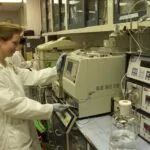
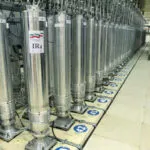
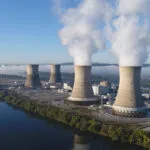


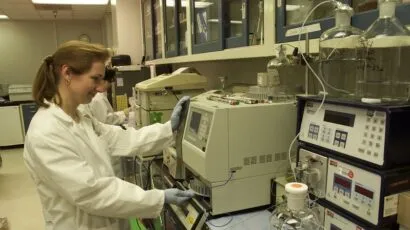


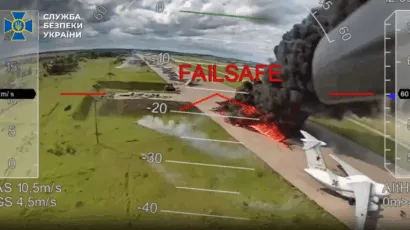

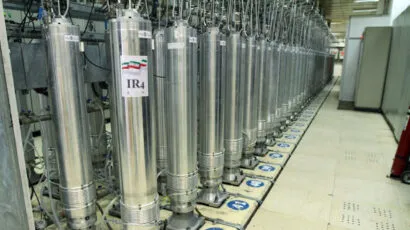
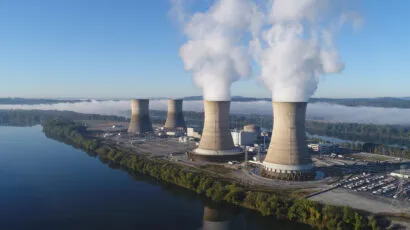

Daniel Jassby, the author of this article, may be contacted by Email at “[email protected]”
The fusion neutrons gradually dissipate their heat in the reactor wall and in a region extending up to 50 cm beyond the wall (the so-called “blanket.”) The heat is removed by liquid or gaseous coolant circulating in this region. This same region contains lithium or lithium compounds that undergo reactions with the neutrons to produce tritium. The coolant itself might contain lithium. For example, liquid lithium, lithium-lead eutectic, or a molten salt. However, all blanket schemes are speculative— nothing has ever been tested. ———————— As for helium, there are two sources of helium in a fusion reactor: The first is… Read more »
The problem with wind, and solar is that power production from these sources is weather dependent. Storing the energy is also a problem as batteries degrade over time and there also exists energy losses when energy is stored and reused again, as conversion of energy is not perfect. The EROI(energy return upon investment) values for these source of energy production is also quite low with solar only being around 7.
all wind and solar should be used to produce hydrogen thru electrolysis. and all other energy needs should use fuel cells. all motor vehicles….that is the perfect closed loop….the battery car world should just be a stepping stone. fuel cells are infinitely more environmentally friendly than ICE’s and battery cars…
Hydrogen fuel cells are not as efficient as battery powered EV’s. Hydrogen has to be compressed (requiring energy) to be put in a tank and the capacity of the tank is small. Then there is the required infrastructure for hydrogen and safety concerns. Solar and wind are no big deal if the energy is stored off peak. To say that batteries should not be used to store energy because of loss would be like saying we should not use natural gas or coal power plants because of their inherent ineffeciencies and loss. There are many ways to store energy besides… Read more »
Oh yeah, let’s keep burning oil and coal. Who cares, we’re all going to die anyway right?
The point of ITER and the other fusion reactors is the POTENTIAL for clean energy. The problems you raise, (to a large extent) can be mitigated. Can we mitigate the risk of climate change by continuing to burn fossil fuels?
No. Then it is imperative we keep looking.
We already have fission power so why keep wasting billions on something that has the same problems than fission plus some extra? Also new designs for simpler, smaller fission reactors exist, and of course the well known “fourth generation reactors”.
because fission power is even less efficient
It’s not fusion power, fission power, or fossil power. The marketplace has now provided inexpensive and reliable solar panels and batteries that can be combined to create ample clean energy without climate or health-harming emissions and obviously no potential for nuclear proliferation. It’s still fusion power but with the reactor (the sun) safely 93,000,000 miles away.
I think the biggest problem faced by national governments around the world when trying to come up with solutions to 21st century energy requirements is that they are all looking for a magic bullet. I believe that the solutions to finding safe and affordable energy really needs to be approached on a region by region and sometimes on a site by site basis, and what I am saying is that using current technologies ie solar,wind,coal,nuclear,geo-thermal,hydro including tidal and battery storage in a responsible and considered managed fashion we can supply power for our needs and reduce risks and costs associated… Read more »
https://phys.org/news/2017-07-china-artificial-sun-world-steady-state.html
Dan, good to hear from you. You should also read my paper: Synchronized fusion development considering physics, materials and heat transfer, Nuclear Fusion 57 (2017) 126031
Clement Wong
Find it here
https://doi.org/10.1088/1741-4326/aa856f
or
https://iopscience.iop.org/article/10.1088/1741-4326/aa856f
Man made global.warming is a lie. The Earth is NOT cooling. The sea levels have NOT risen, and NASA repeatedly reports Arctic ice is NOT diminishing, but increasing.
Oh, and you’re not getting our guns, either.
You’re joking, I take it.
Global warming is a fact. Sea levels are rising. There is robust evidence for the downward trend in Arctic summer sea ice extent since 1979. It has been established that the region is at its warmest for at least 4,000 years and the Arctic-wide melt season has lengthened at a rate of 5 days per decade from 1979 to 2013, dominated by a later autumn freeze-up.
Oh, and as you make out your will, make sure they stick your guns in your casket so you don’t lose them.
The whole point here is that fusion will never work, never.
Just like all that other pie-in-the-sky nonsense! I mean, who would ever believe that mankind could learn to fly? Or eradicate smallpox? Or power a machine with steam? The fact that things are difficult, does not make them less worthwhile.
The fact that one technological idea was successful and feasible enough to be adopted does not automatically mean that all of them will be.
And vice versa
Nobody, anywhere, has yet extracted enough net raw energy from a controlled fusion reaction to light a cigarette. This alone makes all promises of fusion’s imminent market (and climate) relevance ridiculous. The article’s point isn’t that fusion can’t work at all (of course it can — it already does in bombs and stars), but that there are deep-physics reasons why it will never be the cheap, clean, copious, nonproliferative electricity source its enthusiasts have been promising for the last half-century plus. Somebody, someday, will be able to build a fusion reactor: there’s no fundamental reason why not. But if they… Read more »
There are things in nature that man can work around with. Man didn’t learn to fly, man wasn’t born or built to fly, but overcame it by inventing devices that fly. But, did you ever come to think, that, in man’s effort to circumvent nature, we basically destroy it? No? We weren’t content with walking, so we invent cars. Ultimately, that invention started destroying nature, little by little, more and more. That need to progress lead man to invent more things for convenience, which leads to more destruction. It’s a vicious circle. Fission is simple. Fission actually obeys the laws… Read more »
Great read. Was wondering however, what about aneutronic fusion using only helium 3? Should produce no where near the neutron problem and electricity is produced from the alpha particles generated instead of heating water. Yes, I understand we would have to mine helium 3 from the moon and gas giants or possibly use a mix of helium 3 and deuterium. Anyway, would love to read your thoughts on that.
Or what about aneutronic fusion using Boron, i.e., H-11B?
To address reader requests, the Bulletin has assembled here in one place a “greatest hits” collection of some of our articles on fusion energy, which date back farther than expected. You can find it at https://thebulletin.org/2019/04/fusions-greatest-hits-as-detailed-in-the-bulletin/
And by coincidence, NBC just published a glowing report a few days ago, saying that “after decades of research, “fusion may be poised for its ‘SpaceX moment’ ”
Great piece, Dr. Jassby. Objective and clearly you have some experience in the field (understatement). How about using Boron instead of Tritium, as some of the startups in the field are doing?
https://onezero.medium.com/finally-fusion-power-is-about-to-become-a-reality-c6b8b5915cf5
Dr. Jassby, Great piece, thanks. The best contrarian opinion I’ve seen among the current crop of sanguine articles now that startup funding is on the rise. And from a scientist with street cred in the field. What it boils down to ultimately is economic viability and risk reward. This piece shines light on the daunting challenges. The question then is, if ITER is stumbling white elephant, can the private startups working in the field address some of these challenges. ANd in what realistic time frame.
Well , back to the drawing board!
Any ideas ?
What should our energy policy be?
Simple, use far less.
Wow. Just… wow. Dense, informative, and delightful. Thanks.
More people should retire 🙂
Isn’t the goal to upgrade to hydrogen-hydrogen fusion as our reactor technology improves? Doesn’t this resolve the neutron emissions and the need for tritium?
You know about this, don’t you? …
p + p → 2 1H + e+ + ν e
This reaction is extremely slow due to it being initiated by the weak nuclear force. The average proton in the core of the Sun waits 9 billion years before it successfully fuses with another proton. It has not been possible to measure the cross-section of this reaction experimentally because of these long time scales.
Fantastic read! 1. Everything we’ve been fed about the nirvana of fusion energy for 30 years, is a complete scam! 2. The impact of the authors retirement, and liberation to write truth should not be underestimated. The flip side of that coin is the delusion and rationales we scientists impose on ourselves in pursuit of fiat objectives, operating in pure faith, even while confronted by physical laws that clearly oppose the goals. 3. The fusion problem has already been solved, there’s a gigantic reactor that floats overhead daily. The problem we have is not generation, but concentration, storage and distribution.… Read more »
Any update to this article in the context of HB11 laser confined & ignited fusion proponents? The dearth of radioactive and neutron byproducts appears resolve the bulk of concerns though plant efficiency is a pretty fundamental feature and metric.
The National Ignition Facility (NIF) was often presented to the public as a path to fusion power production but almost all fusion scientists admit that it is not a viable path. It has always been primarily funded as a thermonuclear weapons research tool. After many delays and over-cost funding it never achieved its primary goal of achieving a break-even fusion reaction. The designers admit that it likely never will. Its continued funding is propelled by the inertia of the billions of USD already sunk into the project.
Why is this guy using tritium in the first place??? We should start with hydrogen or helium….
Oh, skip that….why use doped up hydrogen???
The article mentions that the fusion reactivity is MUCH higher for deuterium and tritium than protium. More energy is released from deuterium-tritium fusion than deuterium-deuterium fusion. Tritium and helium-3 both are in limited supply and have uses outside of fusion, there is a great release of energy in either case, so there are incentives to investigate both pathways.
What I find kind of sad is that everyone seems to be only looking at what we need right now. I mean that while we are looking at climate change and other negative future effects of our current way of living, we are not really looking at what we might want to do in the future. I believe that while we could meet our energy demands with things like solar, wind, geothermal and other classic sustainable energy sources, our growth beyond that will be a lot harder without a viable method of producing large amounts of energy. Currently the most… Read more »
Just when we thought it was safe to jump into the fission-fusion water again, we find that Newt’s 3rd Law is still appropriate in everything we do. I imagine many folk have wondered; but Is there a way to use magnetic repulsion as a power? And, isn’t the earth’s spinning a genuine perpetual motion ‘machine’, if we could work out how to harness such? Not a scientist lol:)
Jassby gets right most of the problems of magnetic confinement. His comment that the need to be 1GW to produce affordable power is unreasonable, but perhaps aimed for applause from those who imagine fusion power can be produced in “compact” machines, as if the Holy Grail will turn out to be a Dixie cup. His message about neutron damage and activation was understood in the early 1970s, and that the message is not a bit less dire today than it was then is important. But his message about the proliferation threat posed by the huge flux of neutrons in even… Read more »
I was in a materials-science/solid-state physics group way back in the 1970s. There was a seminar or two on the supposed promise of fusion reactors. Even though my fellow graduate students were materials-science types and not nuclear physicists their reaction was to immediately began commenting about the neutron damage, the blistering, the contaminated materials that would be produced. All of that has been well understood from the get go. It seems that politicians in Washington are suckers for stories such as the fusion idea thanks to prior successes such as nuclear weapons in WWII, fission reactors, lasers, transistors etc. They… Read more »
The comment by Mike O’Connor is important, but I have to point out that he has skipped the point that the neutron problem will be reduced to a non problem by the lithium layer Jassby mentions. This exercises the standoff distance of inertial fusion with heavy ion beams (or lasers, except that they have fallen short of ignition) to surrounding the clean and miniaturized fusion explosions with a thick lithium layer (~1 meter). It would be good if Mr. O’Connor would acknowledge this and that this design solution takes the neutron problem off the table. What that leads to is—with neutrons… Read more »
I am concerned about how we address comparative option discussions like this. It’s not good -science if you don’t include all the drawbacks and advantages of each potential technology. – Where do we see comparisons that include waste heat? Carbon and water vapor emissions are of concern because of their greenhouse effects. How does that compare to direct thermal pollution? – How deep is the wind (tidal, geothermal )energy well? (Would, for example, subtracting the total energy demand of the planet from the available wind energy world-wide, have significant global, or local weather impacts?) – How deep is the tritium… Read more »
Very interesting, thanks. It does seem to me that the ability of a fusion plant to produce plutonium is generally overstated, that it can do it is not in dispute, but you are not going to construct and use a hugely expensive plant of this type with that in mind. Despite the ideals, fusion remains a chimera, one absorbing substantial intellectual and engineering skills better used on something more practical. Here, reference remains targeted on Alvin Weinberg’s creation, the Molten Salt Reactor. This too has challenges, but offers greater inherent safety and usability with fewer complications. What is not in… Read more »
Read nuclear PhD engineer Robert Zubrin’s great book for the layman Merchants Of Despair.
Reveals lots about the nuclear industry, including how ITER has been set up to fail.
Underfunded & held back by too many bureaucrats. A top read.
Great article. I’ve always thought that the rosy predictions of nuclear fusion proponents was not entirely believable. Of course, we should proceed with studying and building out this technology, but the timeline for it to be a feasible alternative energy source seems much further out than many experts are predicting. Recently, articles have stated that we can have a fully-functioning power plant by around 2040. With all of the requirements, and the potential pitfalls outlined here, it doesn’t seem like the technology will be efficient enough, and decidedly scalable- until 20 years beyond that.
An excellent article. There’s no question all the problems should be categorically identified; I think there is a natural structural tendency for those most knowledgeable (those who live off the fusion funding flow) to minimize or be silent on difficulties and talk up potential benefits, so articles like this are needed. But. Yes, a list of problems must be made. The question is, what is the conclusion drawn from this list? Is it: (a) Fusion power will happen eventually, but it may be many decades/centuries away. Therefore, our generation’s work chipping away at this list of problems is bequeathing an… Read more »
When fission energy became viable, the big worry was an explosion. You say the word ‘nuclear’ and everybody visualizes a mushroom cloud. So they worked hard and designed reactors that rarely or never can explode with prompt fission. “Mission Accomplished” This was before Rachel Carson and “Silent Spring” and the 1960s. Nobody thought about the nuclear ‘trash’ that was left over – “we’ll just bury that stuff”. These days, the fission products are the source of almost all the problems of fission reactors: dangerous to operate, dangerous to refuel, we don’t know where to store the spent fuel, and accidents… Read more »
To Daniel Jassby (or anyone familiar with laser driven nuclear fusion), In your post “Fusion reactors: Not what they’re cracked up to be” https://thebulletin.org/…/fusion-reactors-not-what…/ you describe some serious problems with nuclear fusion. Please examine the design ideas mentioned in HB11 Energy https://hb11.energy/how-it-works/ Please comment on if this design would solve those problems (assuming they can get it to work) and any other problems specific to this design. Note, the article “Elimination of Secondary Neutrons from Laser Proton-Boron Fusion” https://www.hindawi.com/journals/lpb/2021/9978899/ says the H B11 fusion is not really totally aneutronic. I expect there are also other problems which need to be… Read more »
The critical issue for nuclear fusion is the high Coulomb barrier. The key to fusion is overcoming the Coulomb barrier. Solar nuclear fusion would not occur without quantum tunneling regardless of temperature and pressure. It’s the sheer volume of hydrogen that increases the probability of tunneling that keeps the Sun energized. We can’t replicate the same conditions here on Earth however the Coulomb barrier can be significantly reduced increasing the enhancement of the tunneling probability by a strong scalar field.
Please elaborate (or link a source) on how ..?
Great article, looks like fusion is going to at least keep many scientists busy for another 50 years.
We should consider the use of Ammonia as an energy storage mechanism rather than Hydrogen.
I agree with many of the comments on the neutron radiation, the thing about fusion is that the actual energy output is enormous and certainly worth it but capturing that energy and transferring it to electric energy via turbines or whatever is inefficient and destroys the materiel used.
Daniel, science is looking for quark plasma, not fusion. Fusion is turning two protons into an atom with two protons. There is no energy being created. After actually creating fusion for decades, it has shown that it will never create a net gain of energy. I’m not sure how much more proof the scientific community needs to prove my point. Quark plasma uses the field of space itself to be the catalyst. Instead of humans injecting massive amounts of electricity into the reaction to keep it going, space will flow through normal matter to attack the reaction inside the quark… Read more »
Hang on. Fusion reactors need helium for cooling. But Helium is acquired as a by product of oil extraction.
So to run a fusion reactor you would need both fossil fuel for helium, and fission reactors for tritium. Unless the helium for cooling can be produced from the fusion reaction itself.
Also you need boat loads of lithium.
The lust for fusion stems from our love affair with heavy industry. Folks want to work materials like aluminum, steel titanium and that’s why we need high intensity energy sources like fossil fuel or nuclear in the first place. If we change the economy outside the energy industry, we can change the demand for the nature of the energy that we have to supply. It works the other way around too: the economy will evolve to exploit the energy source we supply. Because we discovered fossil fuels we evolved an economy that uses materials that use high intensity energy. If… Read more »
Additionally, even deuterium-deuterium reactors would require expensive and energy-intensive processing of around 50,000 gallons of seawater for every kg of deuterium yielded. The processed fluid would completely sterilized. So it would need to be harvested from somewhere where there is negligible life to avoid that environmental impact.
I appreciate your concern, but this problem actually isn’t. You simply screen the water so that anything macroscopic swims away from the intake unharmed. Everything microscopic regenerates so fast the impact will be nil. 50,000 gallons seems like a lot, but relative to the ocean it’s almost literally nothing, and you’re putting 99.98 percent of it right back.
Let’s see if the experiment even works first? Can any of this stuff really be substantiated without knowing if fusion (on earth) is even possible? Do other “experts” in the field agree with these views? Where are the sited sources? Achieve sustained reactions first, then optimize the systems.
Fusion is a dead end. At best it could be the most technologically complex way to produce electrical energy that we can imagine, but is likely more expensive than solar is already. – And at the end of the day, you’re only producing electrical energy, which is a minority of our energy demand. The nuclear proliferation problem and the very difficult to avoid tritium pollution problem also makes fusion non-viable. The truth is, our current energy consumption is unsustainable, there is no silver bullet solution, and the harsh reality of this will become apparent as we run out of fossil… Read more »
I have long been concerned about the neutron radiation problem. We should not forget that there are reactor design strategies in the works that bypass neutron radiation, my favourite being HB11 Energy’s strategy, which uses chirped pulse amplified lasers and ponderomotive fusion (no heat required or generated). Tokamaks may be useful for research purposes, but I doubt we will ever have to use them for power generation! Also interesting is NASA’s coffee-can-sized lattice confinement fusion device (utilizing a method for triggering nuclear fusion in the space between the atoms of a metal solid), which is radioactive (due primarily to the… Read more »
I favor the concept of LPP Fusion in using HB11 in a dense plasma focus. The electron heating is retained in the plasma by the Compton quantum effect. This means that the plasma pinch must be very small, limiting the pulse power possible. Many reactor cells can be operated without danger except from leaked x-rays(x-ray photocells will absorb most). A three cluster of reactors can make 30 MW. Multiply as with modular fission reactors.
Ladies and gentlemen… did anyone ever stop and think that we need to stop centralizing energy production/sources… The way forward into solving all of these energy problems is to decentralize and therefore localize energy production per home or town…. This can be done many ways… for ex: Solar panels to fuel electrolysis to create hydrogen for a home to run on fuel cells (that way energy doesn’t need to be stored in a battery … or it could whatever works) … other ways too, I’m not gonna get into it but overall that’s the ticket.